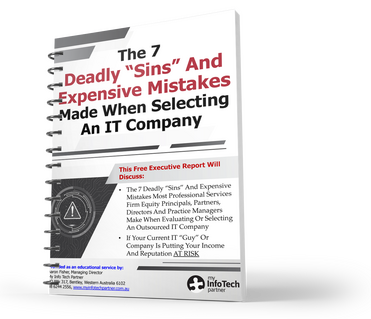 As an equity principal, partner, director, business owner or manager, you likely carefully vet every employee you hire to work for your firm or business. You inspect their resumé and ask detailed questions during their interview to ensure they are the best fit. This is critical to growing your firm or business and making it as successful as possible.
As an equity principal, partner, director, business owner or manager, you likely carefully vet every employee you hire to work for your firm or business. You inspect their resumé and ask detailed questions during their interview to ensure they are the best fit. This is critical to growing your firm or business and making it as successful as possible.
While I am a big proponent of hiring right and trusting your people. There has been a surge of people working from home or in hybrid situations over the last few years and that trend doesn’t look like it is going away. Along with this, there has also been an increase in employers looking for ways to monitor their employees’ work activities to ensure they actually ARE working when remote.
This is no surprise given the new “quiet quitting” trend that has now evolved into “Bare Minimum Mondays” and “Try Less Tuesdays.” Sadly, some employees are taking advantage of working remotely as a way of working less.
Of course, not all remote employees are slackers – but how can an employer know the difference? That’s where software like Teramind and ActivTrak come into play. These are software tools that can be installed on employees’ workstations and laptops to monitor their activity, both while in the office and remote.
Not only will these tools provide insights into productivity and where employees are spending their time, an employer can also see when someone checks in to work and leaves for the day. These apps can also help in ensuring employees aren’t surfing inappropriate websites during work hours using firm or company resources.
While many people are against monitoring, it’s perfectly legal in the US, provided this is for work-related activities on workplace devices. We are unsure whether the law in Australia, deems it legal, so as you’ll see us mention in this article, we suggest you contact a HR lawyer and find out before making a decision on this.
In the US, monitoring laws do vary by state, so you should always check with an HR attorney on any employee-related monitoring. While there is no requirement to gain consent on a federal level, some states require that you establish consent before monitoring. In Australia again check with a HR lawyer who practices in the state you have employees for any state laws that may vary from those at a Federal level.
In the US, it’s also legal to monitor firm-owned devices outside of work hours, including Internet traffic, search terms, websites visited, GPS geolocation and content viewed, to name a few things. If you issue your employees’ phones, you are legally allowed to monitor them as well. It’s even legal to monitor your employees’ own personal devices if you have a BYOD (bring your own device) to work, provided those devices are used for work purposes.
If you are thinking of rolling out employee-monitoring software, here are a few recommendations.
- Let your employees know you WILL be monitoring them, and how, before rolling out any monitoring activities. Being totally transparent about what you are monitoring and why is important to establishing and maintaining trust with your employees. Most people would be very upset to discover you were monitoring them without their knowledge. While it’s legally your right (in most US states) to monitor without letting them know, we feel it’s best to be open about this so they understand what’s being recorded.
- Put in writing what is and isn’t allowed during work hours and on firm or company-owned assets. If you don’t want employees visiting what you deem as inappropriate websites and mixing personal activities with work activities on firm or company-owned devices, let them know that. If they work from home, set guidelines such as start and end times for work and how long and how frequently they can take breaks, detailing when they need to be available (at work). No one likes getting a speeding ticket when there’s no speed limit signs posted. Be absolutely clear on your expectations and put them in writing so there’s no risk of “You never told me that…” happening.
These form part of policies you should already have in place such as an acceptable use policy and bring your own device policy. If you don’t have these and would like a template to start from. Then click here to download our gift to you, which is our Client Success Kit 6 Surefire Ways To Protect Your Income and Firm. This is a $997 value and contains both policies mentioned above in a template form, along with many other valuable resources you can use to protect your income as well as your firm or business.
- Get legal advice before implementing any kind of monitoring software, cameras or activities. Laws can change – and with privacy of data becoming more critical (and a legal hot potato), we suggest you work with a HR lawyer to make sure you’re not violating anyone’s rights. Recently, the US fast-food restaurant White Castle was hit with a lawsuit that could cost them up to $17 billion for using fingerprint login software for their employees to access certain systems. The lawsuit claims they violated the state of Illinois’s biometric identification laws by asking employees to use their fingerprint as a secure way of logging in to their systems without first gaining consent.
So, while it may be legal to monitor employees, you still need to be mindful of employment laws and data and privacy protection of the employees you monitor.
Need help implementing a more secure and productive remote workplace? Click here to schedule a quick call to discuss your options and to get ideas on how we can help you and your entire team be productive and safe, no matter where or how you choose to work.
My Info Tech Partner is a trusted IT Services and IT Support provider in Perth that specialises in helping the equity principals, partners, directors, and practice managers of legal, accounting and financial services firms from making big expensive mistakes with technology and ultimately, protect their livelihood.
Naturally, we are the only one that offers you enhanced peace of mind with our “Never Pay The Ransom” $10,000 Money Back Guarantee.





 Contact Us On
Contact Us On



